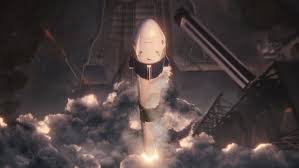
Breaking News
 LIVE ELECTION RESULTS: New York mayor, NJ & VA governor, Prop 50, Trump endorsements, latest vote
LIVE ELECTION RESULTS: New York mayor, NJ & VA governor, Prop 50, Trump endorsements, latest vote
 Sen. Markwayne Mullin Reveals Schumer Held Secret BACKROOM MEETING...
Sen. Markwayne Mullin Reveals Schumer Held Secret BACKROOM MEETING...
 RIP NYC - Muslim Communist Zohran Mamdani Wins New York City Mayoral Race
RIP NYC - Muslim Communist Zohran Mamdani Wins New York City Mayoral Race
 Dramatic Footage Shows UPS Cargo Jet Crashing At Louisville Airport
Dramatic Footage Shows UPS Cargo Jet Crashing At Louisville Airport
Top Tech News
 Japan just injected artificial blood into a human. No blood type needed. No refrigeration.
Japan just injected artificial blood into a human. No blood type needed. No refrigeration.
 The 6 Best LLM Tools To Run Models Locally
The 6 Best LLM Tools To Run Models Locally
 Testing My First Sodium-Ion Solar Battery
Testing My First Sodium-Ion Solar Battery
 A man once paralyzed from the waist down now stands on his own, not with machines or wires,...
A man once paralyzed from the waist down now stands on his own, not with machines or wires,...
 Review: Thumb-sized thermal camera turns your phone into a smart tool
Review: Thumb-sized thermal camera turns your phone into a smart tool
 Army To Bring Nuclear Microreactors To Its Bases By 2028
Army To Bring Nuclear Microreactors To Its Bases By 2028
 Nissan Says It's On Track For Solid-State Batteries That Double EV Range By 2028
Nissan Says It's On Track For Solid-State Batteries That Double EV Range By 2028
 Carbon based computers that run on iron
Carbon based computers that run on iron
 Russia flies strategic cruise missile propelled by a nuclear engine
Russia flies strategic cruise missile propelled by a nuclear engine
 100% Free AC & Heat from SOLAR! Airspool Mini Split AC from Santan Solar | Unboxing & Install
100% Free AC & Heat from SOLAR! Airspool Mini Split AC from Santan Solar | Unboxing & Install
SpaceX's Crew Dragon scheduled for first trip to orbit

Though designed to carry astronauts into space, the flight will be the first in a series of unpiloted tests to take place this year to verify the safety of the vehicle.
The Crew Dragon spacecraft is built from the same blueprint as SpaceX's Dragon capsule, which has been shuttling supplies to the International Space Station since 2012. The cabin, however, is optimized for comfortable human travel rather than cargo, featuring carbon fiber seating finished in Alcantara, climate control and four windows for panoramic views.
Back in early January we got a glimpse of the Crew Dragon perched on the pad in Florida atop a Falcon 9 rocket, with SpaceX seemingly preparing the booster-capsule combo for lift-off. NASA has now confirmed it is targeting a 2:48 am lift off on March 2 from its Kennedy Space Center in Florida.
It is expected to reach preliminary orbit ten minutes after launch and dock with the International Space Station around 24 hours later, where it will remain attached for five days. Here it will provide the crew with around 400 lb (180 kg) of fresh supplies, and then carry research samples back to Earth when it departs on March 8.



